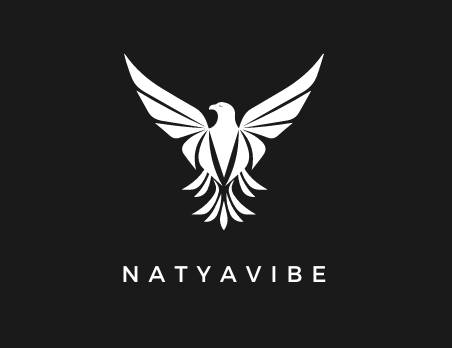Introduction
Imagine stepping onto the stage, the lights are dim, and the audience is excited to watch. The music starts, and you begin to dance. But what helps you with every move, every gesture, and every expression? That’s where the Natya Shastra comes in. The Natya Shastra is an ancient Indian text that teaches about the performing arts. It’s like a guide for dancers, offering important lessons on how to dance in Bharatanatyam. It’s not just about learning the steps; it’s the heart of this dance form. In this blog, let’s explore how the Natya Shastra has shaped Bharatanatyam and how it helps dancers express themselves today.
What is the Natya Shastra?
Before we dive into its role, let’s first understand what the Natya Shastra is all about. Written by the wise sage Bharat Muni, the Natya Shastra is a detailed text that covers all parts of performing arts. It talks about music, dance, drama, stagecraft, and even the emotions that performers should express. This ancient text is like the key to understanding classical Indian art forms. With over 36 chapters, it’s often called the “Bible of Indian classical arts.” In Bharatanatyam, the Natya Shastra acts as a basic guide, helping dancers not only with the physical movements but also with the deeper meaning behind each step and gesture.

The Principles of Bharatanatyam: Guided by the Natya Shastra
In Bharatanatyam, every hand gesture, every facial expression, and every foot movement is deeply rooted in the Natya Shastra. The Natya Shastra lays out the intricate details of Mudras (hand gestures), Abhinaya (expressions), and Nritya (dance movements) which are essential components of Bharatanatyam.
- Mudras: In the Natya Shastra, hand gestures or Mudras are used to communicate specific meanings. For example, the Pataka mudra is often used to depict a flag or a story element like water, while the Alapadma can symbolize a flower. These hand gestures are not just ornamental but are powerful tools for storytelling.
- Abhinaya: The emotional expressions or Abhinaya in Bharatanatyam are influenced by the principles in the Natya Shastra. . In this dance form, a dancer’s ability to show emotions like joy, sorrow, anger, or love is essential. The Natya Shastra provides guidelines that help dancers convey these feelings through facial expressions and body movements. By following these principles, dancers can express deep emotions without saying a word, making the performance even more powerful and meaningful.
- Nritya: The Natya Shastra also plays a pivotal role in shaping the dance movements, or Nritya. It discusses the postures, footwork, and intricate movements that form the core of Bharatanatyam. These movements are meant to not only showcase the dancer’s technical ability but also to connect them to the divine.
The Connection Between Music and Dance
In Bharatanatyam, music and dance are closely connected, and the Natya Shastra beautifully explains how they should work together. The text guides how music should complement the dance and vice versa, covering aspects like rhythm, tempo, and mood for each dance piece. For example, the Jathi, or rhythmic pattern, in Bharatanatyam is carefully chosen to match the emotions and story being told, following the principles in the Natya Shastra. This balance between rhythm and movement creates a harmonious experience, drawing the audience deeply into the world of the performance.
The Importance of Rasa in Bharatanatyam
One key concept in the Natya Shastra is Rasa, which refers to the emotional experience or “flavor” that the audience should feel during a performance. In Bharatanatyam, like in other classical dance forms, the goal is to evoke one or more of the nine Rasas—such as Shanta (peace), Vira (heroism), or Karuna (compassion). By following the principles of the Natya Shastra, dancers can create a deeper connection with the audience, making the performance more than just entertainment. It becomes a spiritual experience where both the dancer and the audience share in an emotional journey together.
Bharatanatyam Today: Still Guided by the Natya Shastra
Even today, the teachings of the Natya Shastra continue to shape Bharatanatyam. While modern performances might blend fusion styles or offer new interpretations, the core principles of the Natya Shastra remain essential. Dancers still learn the detailed hand gestures, facial expressions, and footwork described in the text. In fact, many Bharatanatyam dancers, whether classical or contemporary, refer to the Natya Shastra to understand the deeper meanings behind their movements and expressions.
The wisdom of the Natya Shastra is timeless. It continues to guide dancers on their artistic journeys and helps preserve the rich tradition of Bharatanatyam. Whether a beginner learning the basics or an experienced performer preparing for a major recital, the Natya Shastra serves as a constant source of inspiration.
Conclusion
The Natya Shastra has played a crucial role in shaping Bharatanatyam into the beautiful art form we know and appreciate today. From its detailed guidance on hand gestures and expressions to its focus on emotional connection and music, the Natya Shastra provides the foundation that turns Bharatanatyam into more than just a dance. It transforms it into a spiritual, storytelling experience. As we continue to admire Bharatanatyam, it’s important to recognize the lasting influence of the Natya Shastra. So, the next time you watch a Bharatanatyam performance, take a moment to think about how these ancient teachings still echo in the dance movements of today. If you want to know more about Bharatnatyam you can visit NatyaVibes.
What do you think—does the Natya Shastra still hold the same relevance in today’s Bharatanatyam performances, or do you believe there’s space for new interpretations?

